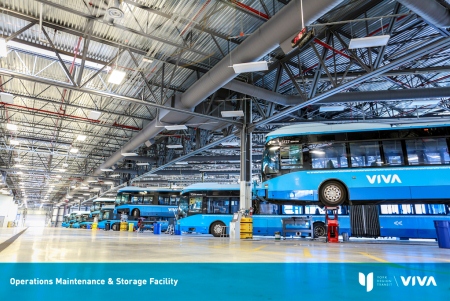By now, our projects may be familiar to you if you’ve travelled through our rapidway construction areas, or seen the vision come to life on Highway 7 and Davis Drive. Curious about where the next projects will be? Well, future transit plans are always guided by many factors, including York Region’s priorities and the other changes happening in the GTA.
York Region’s overall priorities for roads, transit, cycling and walking are set out in the Transportation Master Plan [TMP]. From this, the region’s transit operations branch, YRT/Viva, creates annual Service Plans. Within the Service Plans, changes are proposed to routes where there appears to be demand, future development or transit connections. There are plans to complete the remaining rapidway segments along the existing Viva routes on Highway 7 and Yonge Street, and Viva routes will expand in the coming years along sections of Jane Street, Major Mackenzie Drive, and Leslie Street. Typically, new Viva routes begin with service at enhanced curbside stations. Then, once funding is in place, vivaNext takes Viva out of mixed traffic by building dedicated rapidway lanes, making it truly “rapid” transit.
As always, bringing subways to York Region is a top priority, including the Yonge Subway Extension and the Toronto-York Spadina Subway Extension [TYSSE]. The TYSSE will be generating excitement in the final year of construction as it makes history as the first TTC subway to cross regional boundaries. In the 2018 Service Plan there are changes being proposed as part of the Spadina Subway Transit Strategy [SSTS], helping Viva riders connect to the new subway.
So what can we expect to see on the roads ahead? We’re certain to see transformations – ones that connect transit and people – that we made together with you. And now, it’s back to building what’s next as spring construction is ramping up with better weather on the horizon.


